The atomic age began between heartbeats at 8:15 am on August 6, 1945 when the Japanese city of Hiroshima was leveled by an atomic bomb. Three days later, the United States dropped a second bomb on Nagasaki, marking the first time humanity broke atoms in anger.
For the people of Hiroshima, the day was one of unimaginable suffering. The blast killed 80,000 instantly, and over 100,000 additional people would later succumb to their injuries, perish in the conflagration that consumed the city, or die from the radiation that fell darkly to the earth in a “black rain.”
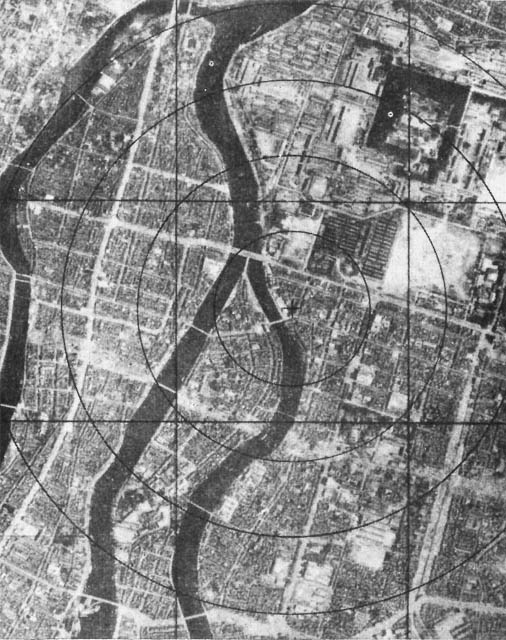 |
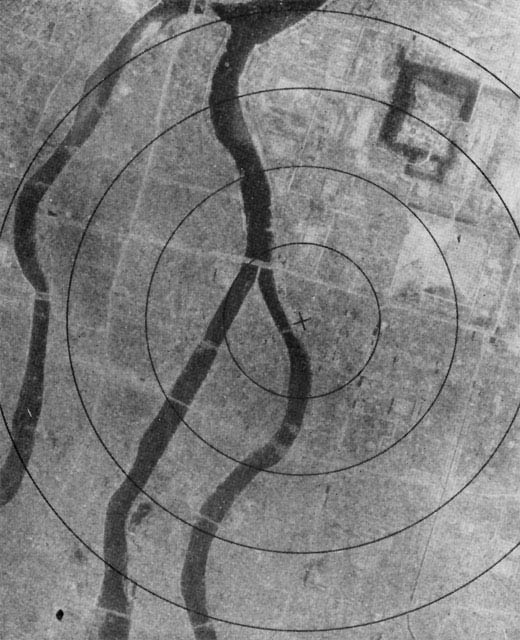 |
| Aerial view of Hiroshima before and then after the bombing. | |
The situation was made worse because the Americans had not previously bombed Hiroshima with conventional weapons; despite the fact that it was a major military base and was designated to be the new capital should Tokyo fall into enemy hands. The absence of bombing had convinced tens of thousands to seek refuge in the city's illusory safety, unintentionally adding to the death toll.
The destruction of Hiroshima marked the culmination of the aerial campaigns of World War II. Although Western Europe and the United States decried Nazi support of the bombings of civilian targets in the Spanish Civil War and Japanese attacks on Nanjing and Guangzhou less than a decade earlier, the Allies had fully embraced strategic bombings of civilians by 1945.
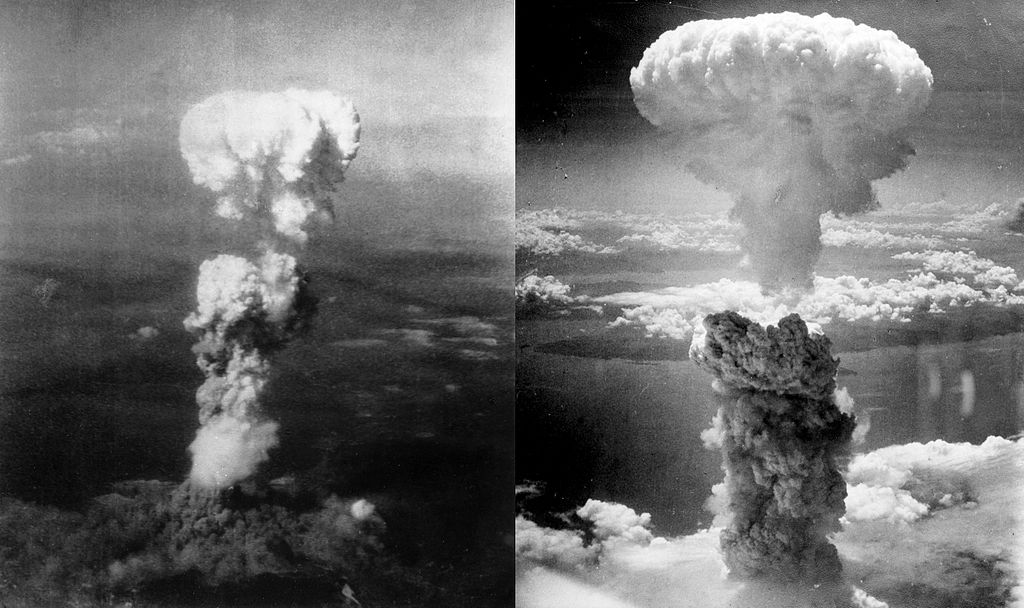 |
| The dropping of the bombs over Hiroshima (left) and Nagasaki (right) resulted in towering mushroom clouds. |
By the end of the war, the Allied bombing campaigns had left dozens of Japanese and German cities in ruins. The American firebombing of Tokyo caused much of the city to burn down and killed between 75,000 and 200,000 people. Similar Allied attacks in Germany killed upwards of 46,000 in Hamburg and 25,000 in Dresden.
Although the Japanese people suffered greatly during this bombing campaign, their country was hardly an innocent victim of the war. It was an aggressor that invaded countries throughout Asia and treated them brutally.
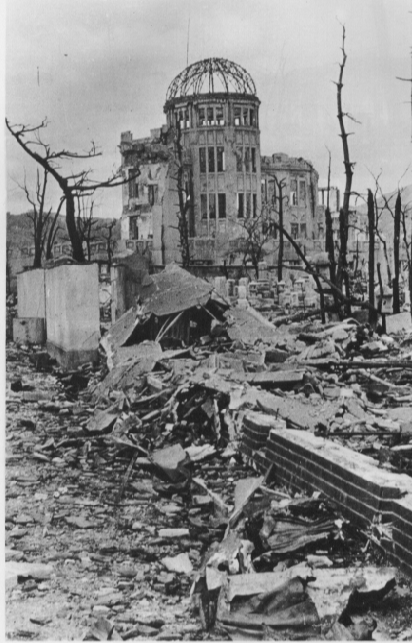 |
| This structure was one of the few left standing after the bombing in Hiroshima. It is now known as the Atomic Bomb Dome. |
The terror its citizens experienced through the American bombing campaign was itself a mirror of that experienced by the victims of Japanese invasions throughout Asia. It should not be forgotten that among the dead in Hiroshima were twenty thousand Koreans who the Japanese had forced into slave labor.
Japan was also a full participant in the international race to develop nuclear weapons and would doubtlessly have used those same weapons had it succeeded in developing them. In fact, Japan only abandoned its efforts to build atomic bombs after a series of shortcomings and failures convinced its government to focus on a different super weapon program: a death ray that would have used microwaves to kill.
President Harry S. Truman ordered the bombing of Hiroshima with the belief that it would shorten the war and save lives, though he was predominantly focused on American lives. His commanders predicted upwards of half a million American casualties if a direct assault on Japan was necessary and even higher numbers of Japanese.
The American leadership also considered a swift end of the war in the Pacific necessary because the Soviet Union was set to enter the war against Japan on August 8, 1945, three months to the day after the defeat of Germany. Truman and other American leaders pushed to end the war before the Soviets could earn a zone of occupation in Japan as they had in Germany.
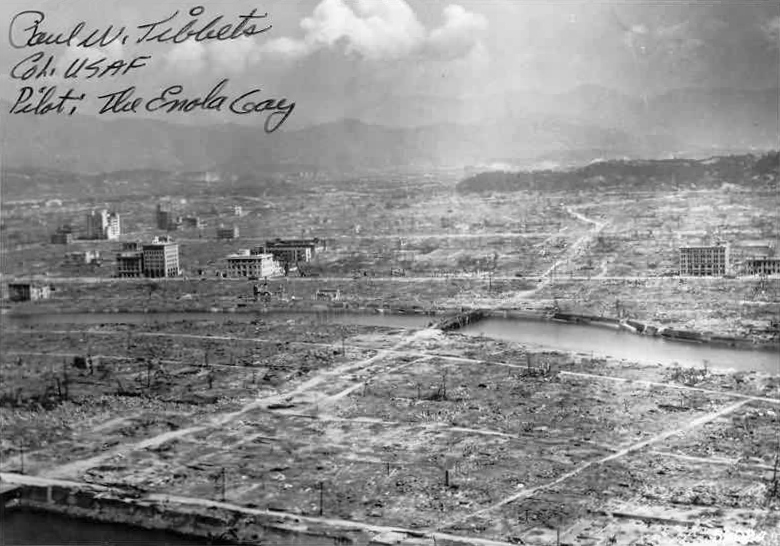 |
| Hiroshima in the wake of the bombing. |
To this day, scholars hotly debate whether the bombings of Hiroshima and Nagasaki or the Soviet entry into the war brought the war in the Pacific to a close, but, as Japanese officials observed at the time, it was a combination of both.
The Japanese strategy, however, was incompatible with the Americans' haste to end the war. Most Japanese leaders recognized that their cause was lost in 1945, but hoped to force a decisive battle that would leave them in a position to surrender while maintaining their government. Over and over the Japanese fought desperate battles not to win the war, but to win a seat at the negotiating table.
The Allies held to their demand for unconditional surrender, which was intended to avoid the repeat of the ”stab in the back” myth that emerged in Germany after the end of World War I. Regardless of its purpose, this demand did not give the Allies any flexibility to negotiate with the Japanese.
| A view of the Atomic Bomb Dome today from the Hiroshima Peace Memorial Park. |
Despite utter devastation, the effects of the atomic bomb on Hiroshima were not as severe as one might think. Unlike in the nuclear disasters at Chernobyl and Fukushima, the city was never evacuated, though that was largely due to a lack of information and the logistical near impossibility of doing so.
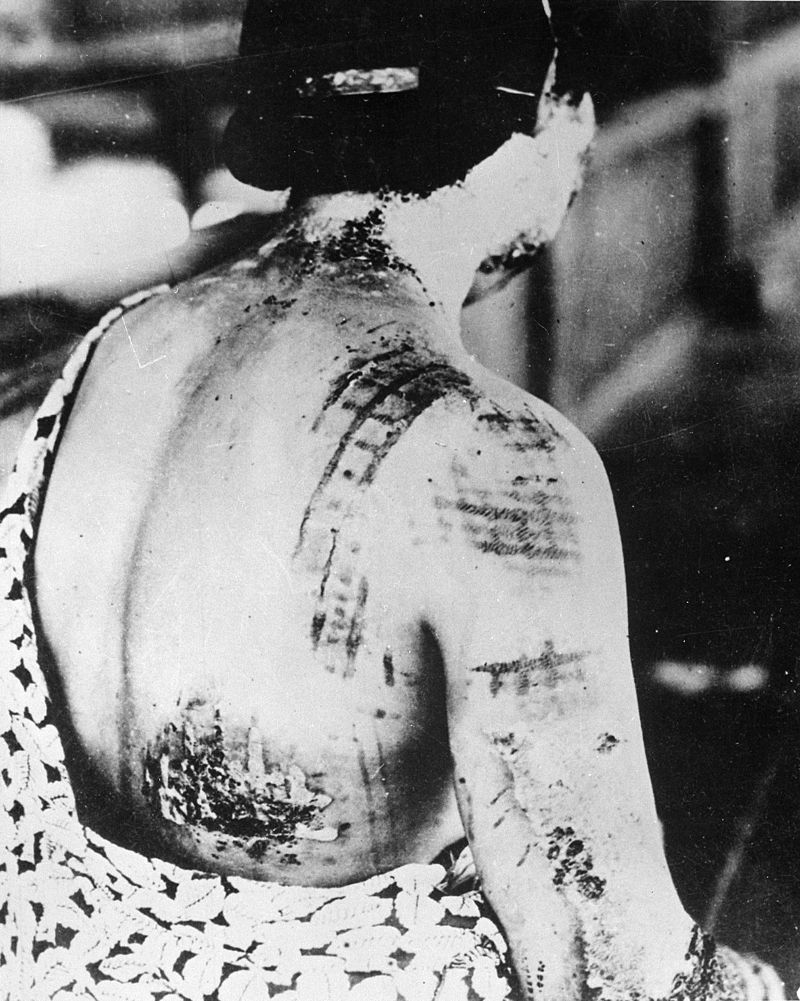 |
| This woman's burns resulted from exposure to thermal radiation, a by-product of the blast at Hiroshima. |
The Americans detonated the Hiroshima bomb nearly 2,000 feet above the city, which somewhat limited the damage caused by radiation. In fact, in his memo predicting the effects of the bomb, Manhattan Project lead scientist Robert Oppenheimer argued that the radioactive byproducts would go into the upper atmosphere and be dispersed throughout the world.
This process did occur, but the detonation caused a rainstorm that brought many radioactive byproducts back to earth. This “black rain” exposed the survivors of Hiroshima to radiation that caused a host of health problems, such as damage to internal organs and an increased rate of cancer. The black rain would have been hard for Oppenheimer and others who developed the atomic bomb to predict, however, because the only test detonation was done in the Nevada desert where there was not enough moisture for rain.
Hiroshima is indelibly linked with its destruction, but the city and its people are also intimately connected with the peace movement. During their Occupation, the Americans wrote a new constitution for the Japanese, which included the famous Article 9, a provision that all but makes war illegal.
Hiroshima emerged as the spiritual center of both the Japanese antinuclear and peace movements. In the aftermath of the war, it constructed the Hiroshima Peace Memorial Museum that has been dedicated to commemorating the bombing of Hiroshima and to eliminating nuclear weapons. The museum is housed in the Peace Memorial Park, which includes an eternal flame that will burn until all nuclear weapons are eliminated. The Park serves as a gathering ground for tens of thousands to commemorate the bombing and demonstrate for peace.
 |
| This historic torii welcomes visitors to Istukushima Shrine which is both a UNESCO "World Heritage Site" and less than 30 kilometers from downtown Hiroshima. It was untouched by the blast. |
Today, the Hiroshima's level of radioactivity has reverted to the world background level. The residents of Denver, Colorado experience a higher level of radioactivity than those of Hiroshima and Nagasaki. The residents of Hiroshima report elevated levels of some cancers, with the highest rate of liver cancer in the world, but other forms of cancer occur at average or even low rates comparably.
Hiroshima is an exquisite, complicated city known for its food, the stunning natural beauty of its bay, and an incident decades ago that will forever connect it with nuclear weapons and peace.
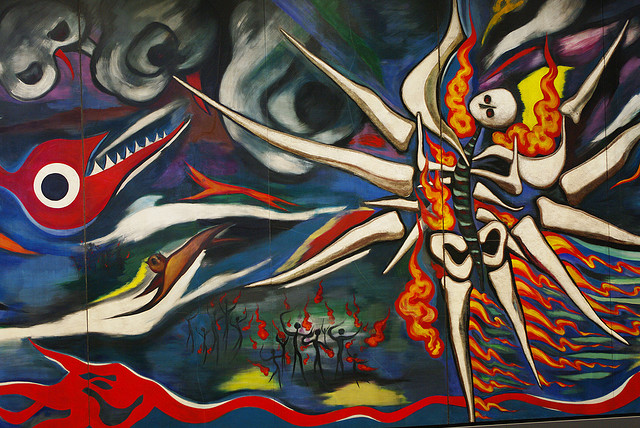 |
| Gracing one of Tokyo's largest subway stations (Shibuya Station), this mural "The Myth of Tomorrow" presents a chilling take on the concept of progress. |
